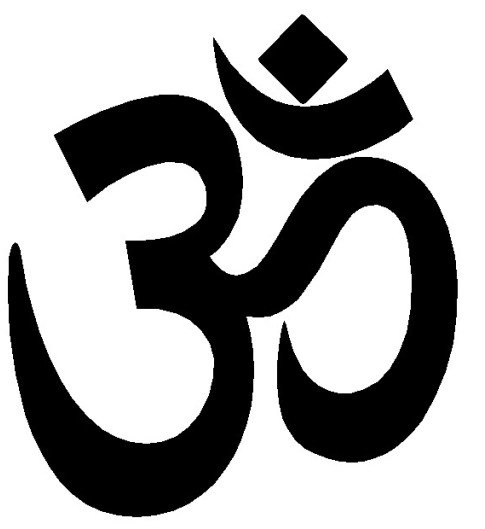What is the meaning of "OM"
WHAT’S WITH CHANTING “OM”? SHOULD A CHRISTIAN JOIN IN?
"OM" is India’s supreme mantra, the most sacred sound, the pranava. It comes from the most ancient Vedic times. More than any particular name of the Divinity in Hinduism, it conveys the ineffability and the depths of the divine Mystery. It bears no special distinct meaning, as do the names, for example, of Shiva and Rama. It does not even recall any mythological or semi-historical event. It is a kind of inarticulate exclamation uttered when one is confronted with the Presence within and around oneself.
The most frequent explanation of it is that it is formed of three elements: the vowel A combined with U to make O, and prolonged with a nasal after-sound M. It is therefore said to symbolize all possible triads in place and time—the past, the present, and the future—as well as what is beyond all triads because God is in everything and yet is beyond everything. Sometimes, a fourth element is added: silence.
Since OM comes near to the utmost limit of what can be uttered or heard, it is considered better fitted than any other sound to express the bankruptcy of word and thought when the mind is directly presented with the ineffable mystery of God.
The contemplative or apophatic (way of negation) tradition of Christian prayer is based on the same premise: that there are no words or images or concepts which can ultimately capture the reality of who and what God is. This is what Psalm 46 witnesses to when it says, “Be still, and know that I am God.”
The kataphatic (way of affirmation) tradition of Christian prayer places its stress upon what we can know about God as manifested in Jesus. These two pathways of praying both have their place. It is not either/or, but both/and. Yes, God’s self was revealed in Jesus, but Jesus’ life, circumscribed as it was by the limitations of a historic time and place and culture and life-span, by no means exhausted all there is to know about God.
In view of this, there is a very long tradition of monologistic (literally: one word) prayer in Christian spirituality, and it flows precisely out of the experience of God as ineffable Mystery. Thus Christians have historically prayed with a short word or phrase in recognition that, ultimately, all words and concepts break apart and fall short of capturing the full reality of who and what God is. That recognition is basically what the mantra OM was intended to express. OM stands for God the essential Beyond, to whom everyone who has had even a glimpse of that Presence is insistently called and irresistibly tends.
Henri Le Saux, a.k.a. Abhishiktananda, a Christian monk with an exceptional grasp of the Hindu mystical tradition, said this of the mantra OM:
““The use of the pranava (OM) cannot be recommended indiscriminately to Christians, or of course to any others. It is too rich and too exalted for anyone to be capable of using it unless s/he has at least begun to taste the inner experience to which it refers. Otherwise it remains an empty sound, having no spiritual echo in the one who utters it. But if the Christian has tasted the spiritual tradition of India, and better still, if he has accepted the full implications of the gospel’s message (for the gathering and summing up of all things in Christ, and in him, the return of all to the Father, the Source and Consummation of all (1 Cor. 15:28,) and has allowed the Spirit to lead him into the depths of his own heart, then he is as much entitled as his Hindu brother or sister to sing or whisper the OM, the ultimate symbol of the abysmal depth of God and the self” (Abhishiktananda, Prayer, SPCK, 1967, p. 61).
So while there is a direct analogue in Christian practice for this kind of prayer, it follows that OM is not a chant to be used lightly, or simply because it’s “cool” or “what people do” in yoga classes. Out of respect for the unique status of this word in the yogic tradition, a student or teacher deciding to use it would do well to do some catechesis around the word and the apophatic expression of Christian prayer to enable the Christian participants to see how their own spiritual tradition also recognizes what OM is intended to express.
As an alternative, some participants of our network choose to use the word "shalom," which is the Hebrew word for peace, God's peace, and which ends with a similar sound.
xx
If you’d like to experience a class taught from a Christian perspective, consider a live, donation-based class from a teacher in our network. You can view many recorded practice on YouTube. For updates, education and inspiration from CPY, subscribe to our Weekly Wonderings email.

